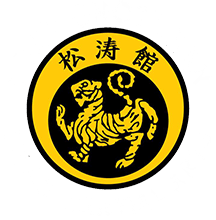About Us
About York Shotokan Mixed Martial Arts
Founding of York Shotokan Karate Club
The York Shotokan Karate Club was founded sometime before 1960. Believed to be one of the first martial arts institutions in Pennsylvania, the original dojo was located in a rented barn just east of the school’s present site.
Evolution of the School under Sensei/Master Tony Abel
In 1976, Sensei/Master Tony Abel became the school’s Chief Instructor. Under his leadership, the school curriculum evolved to incorporate techniques from various martial arts styles. Sensei Abel believes that his students need to be well-rounded like a “well-oiled machines” and able to adapt to any situation or environment.
Sensei Abel, a former Emergency Medical Technician and Advanced Life Support Paramedic, also incorporated his medical background into the school curriculum. By understanding the anatomy and physiology of the human body, it was believed that the students would be better able to understand where and how to strike, as well as the anatomical effect the attack would have on the human body.
Notable Achievements and International Exposure
Throughout the 1970s, 1980s and 1990s, Sensei Abel enjoyed a successful and notable fighting career actively competing throughout the United States and Internationally. Noteworthy accomplishments include the former United States Director of the martial arts olympics held in Saint Petersburg, Russia. Sensei Abel served as a team captain and competitor in numerous championships worldwide and had opportunities to train with a variety of instructors across many different styles and disciplines.
Sensei Abel integrated his unique experiences and diverse knowledge into his teaching methods. The York Shotokan Karate Club continued to grow and, in 1991, relocated to its present location, a 4,750-square-foot first-rate facility.
Growth and Transition to Mixed Martial Arts
After years of teaching ground fighting, stand-up, pressure point tactics, joint manipulation, throws and sweeps, etc. of many other fighting styles, including Krav Maga, Brazilian Jiu Jitsu, Muay Thai, to name a few, the York Shotokan Karate Club transitioned to York Shotokan Karate and Mixed Martial Arts in 2010 to better reflect our varied approach.
Mission Statement
To provide the highest quality martial arts instruction to our students so that they can effectively defend themselves regardless of age, gender, or physical ability. Our mission is to encourage and motivate our students to grow physically, mentally, and spiritually. We inspire our students to live a life centered on the concepts of integrity, respect, humility, patience, and discipline. We are committed to providing the finest instruction at the most affordable rates in a first-class facility.
The goal of our youth programs is to create a sound foundation for children’s physical growth and psychological development. Our goal is to equip our students with the knowledge and skills necessary to help safeguard their physical well-being. Students are motivated and encouraged to improve their focus, learn self-control and self-respect, and develop an increased sense of responsibility and respect for others.
Why Choose Us
The popularity of martial arts has led to an explosion of martial arts schools. There are many important things to consider when choosing the right school for you:
- Quality of Instruction
- Qualifications of the Instructors
- Location and Facilities
- Philosophy and Values of the School
Development of Shotokan Karate
The origins of Karate can be traced back through the centuries from modern Japan via Okinawa to China and possibly to India in the fourth and fifth centuries B.C. About fourteen centuries ago, Bodhidharma, the founder of Zen Buddhism, left western India, traveled through mountain ranges, including the Himalayas, and crossed unbridged rivers through complete wilderness to present lectures on Buddhism in China.
Since even present roads between India and China would not be described as good, one can imagine the greatness of his spirit and physical strength – so great that he was able to conquer with such courage this difficult several thousand-mile journey alone. Bodhidharma traveled for many years from one temple to another, searching for the ideal place to teach his philosophy. Not only did he carry with him the ideals of Zen Buddhism, but also Indian fighting techniques combined with the breathing methods used in Zen and Yoga.
The Dojo Kun
On the walls of virtually all karate training halls in Japan hangs a set of precepts known as the “Dojo Kun,” or the school’s code of conduct. The dojo kun is said to have originated with an Okinawan karate master known as Kanga Sakugawa (or Sakukawa) (1733-1815). They state the following maxims:
- Seek Perfection of Character
- Be Faithful
- Endeavor
- Respect Others
- Refrain from Violent Behavior
According to karate tradition, there are rules by which a karate-ka is supposed to live.
Sensei Bio

Master Tony R. Abel
Professional Experience
1976-Present: York Shotokan Mixed Martial Arts, York, PA
Owner and Chief Instructor
Sensei Abel is a Master Blackbelt instructor of one of the oldest martial arts school in Central Pennsylvania. With over 50 years of experience and training in martial arts, he conduct seminars on both basic and advance self-defense techniques.
Defensive Tactics Instructor
As a former defensive tactics instructor for the Pennsylvania Attorney General’s Office, Bureau of Narcotics Investigation, and Special Operations Group, he shared his expertise with law enforcement and security personnel across the state.
Pennsylvania State Certified Lethal Weapons Instructor
Certified by the Pennsylvania State Police as a Defensive Tactics Instructor, he also served as an instructor at the Harrisburg Area Community College in the Department of Public Safety at the Municipal Police Academy.
Sensei Abel provided executive protection and private security services for NASCAR personalities, including Rusty Wallace and Sterling Marlin, the rock band Live, and others. He was also the head of security for the Hawaiian Tropic Model Search for ten consecutive years.
